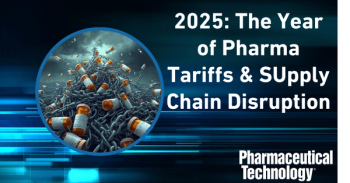
US and EU Regulators Seek to Reduce Pharma Inspections
Sharing un-redacted inspection reports between FDA and EMA may reduce duplicate inspections of facilities.
As a key step toward reducing the need to inspect every drug production facility in Europe, FDA is looking to share un-redacted inspection reports with trusted European regulatory authorities. More extensive information exchange would help move forward a Mutual Recognition Agreement (MRA) with the European Medicines Agency (EMA), which has been in the works for several years. The aim is to identify facilities with strong records of compliance with GMPs based on inspections by competent local inspectorates.
FDA has been receiving un-redacted inspection reports from EMA for years, but current FDA policy prevents sharing of “trade secret” information that appears in field inspection reports, explained Dara Corrigan, associate commissioner for global regulatory policy at FDA. Speaking at the ISPE/FDA/PQRI quality manufacturing conference in Bethesda, MD, this week, she noted that the Department of Justice, Treasury, and Securities and Exchange Commission are able to share sensitive, classified information with certain European Union (EU) authorities. Such policies, she believes, provide a strong precedent for FDA to act similarly. Legislation enacted in 2012, moreover, permits FDA to share confidential information in situations where the agency can certify that the other country can keep such information secret.
Corrigan’s staff is assessing how well EU member states can do this, as part of a broader mutual evaluation of the competency and capabilities of EMA and member state inspectorates. Information that is currently redacted in FDA inspection reports could help European inspectors evaluate whether a manufacturing issue would have an impact on public health.
FDA has renewed efforts to reduce redundant inspections of pharmaceutical production facilities in nations able to conduct thorough GMP inspections. This initiative supports FDA programs for coping with a considerable rise in imports from foreign drug producers, which has required a notable ramp-up in foreign inspections in recent years. Approximately 45% of FDA foreign inspections involve European facilities, and many of these undergo regular reviews by capable, experienced inspectorates in Europe. Programs that reduce the need for FDA to visit such facilities would free up agency resources to better oversee the fast-growing number of facilities in China and India that export active ingredients and finished products to the United States.
The MRA process is complicated, however, by the fact that each of the 28 EU member states conducts its own inspections of pharmaceutical facilities, following different practices based on differing standards. Any MRA thus has to accept inspection reports from 28 separate entities.
The main thrust of negotiations over the past three years is to devise a system for mutual reliance on inspection reports by local regulators found to meet standards. This would build on or replace an FDAâEMA MRA on GMP inspections negotiated in 1998, but never implemented due to a range of legal issues.
The current process involves auditing inspection programs by regulatory officials from FDA, EMA, and EU member states. FDA inspectors are observing a series of inspection audits in Europe that are conducted by investigators from two other EU member states. This process is part of an EU-wide program to support mutual recognition of inspections and assurance of drug quality throughout the region. At the same time, EU officials are auditing FDA’s inspection program and observing US site visits to support EMA decisions to forego a redundant inspection of a US facility. By the end of 2016, FDA will have observed audits of half of the 28 EU member states, ranging from Greece and Croatia to Sweden and the United Kingdom. The audits involve reviewing a 78-item check list and filing an audit report describing any deficiencies, which FDA then will be able to examine and evaluate. The aim of the process is to build confidence in the capabilities of European inspectorates so that FDA can rely on their inspection findings-and for EU officials to have the same confidence in FDA inspection findings.
Corrigan hopes to reach some kind of MRA by the end of the year as part of a hoped-for conclusion to the Transatlantic Trade & Investment Partnership negotiations between the US and EU. That goal appears overly optimistic, but the process still may lead to an initial regulatory agreement. “It’s complicated,” says Corrigan, “but that doesn’t mean it’s impossible.”
Newsletter
Get the essential updates shaping the future of pharma manufacturing and compliance—subscribe today to Pharmaceutical Technology and never miss a breakthrough.




